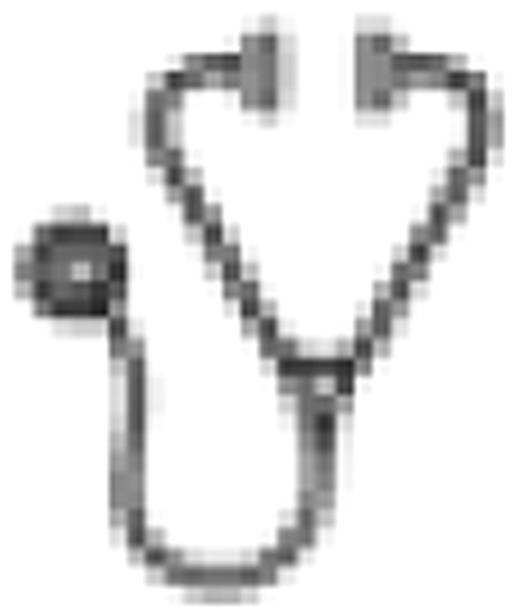Abstract
Poster Board II-615
As wt1 expression is elevated in the majority (80%) of acute myeloid leukemias at diagnosis and relapse, a validated wt1 assay would be a powerful adjunctive tool for evaluation and monitoring of patients during their treatment. Monitoring of disease status with wt1 is applicable to more AML patients in a single assay than any other leukemic marker and includes patients that are cytogenetically normal and may not otherwise be amenable to molecular MRD evaluation. We aimed to analyse wt1 expression in the peripheral blood and bone marrow of patients with de novo AML, when measured at diagnosis, post-induction and post-consolidation; and to correlate these wt1 expression levels with patient characteristics and outcome.
This is a prospective, longitudinal study in which the levels of wt1 expression from 99 patients with de novo AML are measured from bone marrow (59 patients) and peripheral blood (94 patients) specimens at the time of diagnosis and at various time-points along their treatment and clinical courses. The specimens were prospectively stored in the PwC Australasian Leukaemia and Lymphoma Group (ALLG) Tissue Bank. Samples analysed included: 59 bone marrow (bm-wt1) and 94 peripheral blood (pb-wt1) at diagnosis; 54 bm-wt1 and 57 pb-wt1 post-induction; and 46 bm-wt1 and 41 pb-wt1 post-consolidation. 90 of the 99 patients were treated with standard induction chemotherapy on a variety of protocols. RNA was extracted from 107 leukocytes purified from blood and bone marrow using TRIzol® (Invitrogen) extraction. Reverse transcription was performed using Superscript ® (Invitrogen) and RQ-PCR was performed using multiplexed 5' nuclease assay with Black Hole Quencher labelled probes according to published methods. Copy number of wt1 was normalised to 104 copies of ABL. Baseline patient characteristics were correlated with baseline wt1 expression levels and the impact of baseline and post-treatment wt1 expression on leukemia-free survival (LFS) was assessed.
99 AML patients were studied: median age 55years, 53% male. Cytogenetic prognostic groups (SWOG) were favourable – 12%, intermediate – 59% and poor – 29%. 90 patients were treated with curative intent and 83% achieved CR, 6% had refractory disease and 11% died during induction. With a median follow-up of 33 months, the median LFS was 12 months and median OS was 24 months. Median pb-wt1 levels at diagnosis were 5122 (range, 1 to 36125) and varied significantly according to: cytogenetic risk group (good risk 12745, intermediate risk 2632, poor risk 4554 (P = 0.009)) and marrow blast percentage (P = 0.02). Diagnostic bm-wt1 showed similar correlations with baseline parameters, but did not reach statistical significance. Median pb-wt1 at relapse was 3781. One of 21 relapsed patients with elevated pb-wt1 expression at diagnosis did not express wt1 at relapse. In a multivariate Cox regression analysis model including age and cytogenetic risk-group, increased expression of wt1 from peripheral blood at diagnosis is predictive of decreased LFS (P=0.04). This correlation was not seen with wt1 measured from bone marrow aspirates. The wt1 expression levels were reduced following induction chemotherapy with a median 2.6 log reduction (range, 0 to 4.2) seen in marrow aspirate and 3.2 log reduction (range, 0 to 4.3) seen in peripheral blood. There was a trend for lower post-induction peripheral blood wt1 to correlate with better LFS when measured as a continuous variable (P=0.067) or undetected vs detected (P=0.051). Lower post-consolidation pb-wt1 significantly correlated with better LFS when measured as a continuous variable (P=0.002) or undetected vs detected (P=0.02) and continued to be significant in multivariate analysis. Bone marrow aspirate wt1 levels post-induction or post-consolidation did not correlate with LFS.
This study demonstrates a correlation between wt1 expression levels and known risk factors for early relapse. In the MRD setting, detectable wt1 levels in peripheral blood post-induction and post-consolidation predicted very poor leukaemia free survival. Analysis is ongoing to validate these findings in a uniformly treated cohort of patients enrolled on the current ALLG clinical trial.
No relevant conflicts of interest to declare.

This icon denotes an abstract that is clinically relevant.
Author notes
Asterisk with author names denotes non-ASH members.


This feature is available to Subscribers Only
Sign In or Create an Account Close Modal